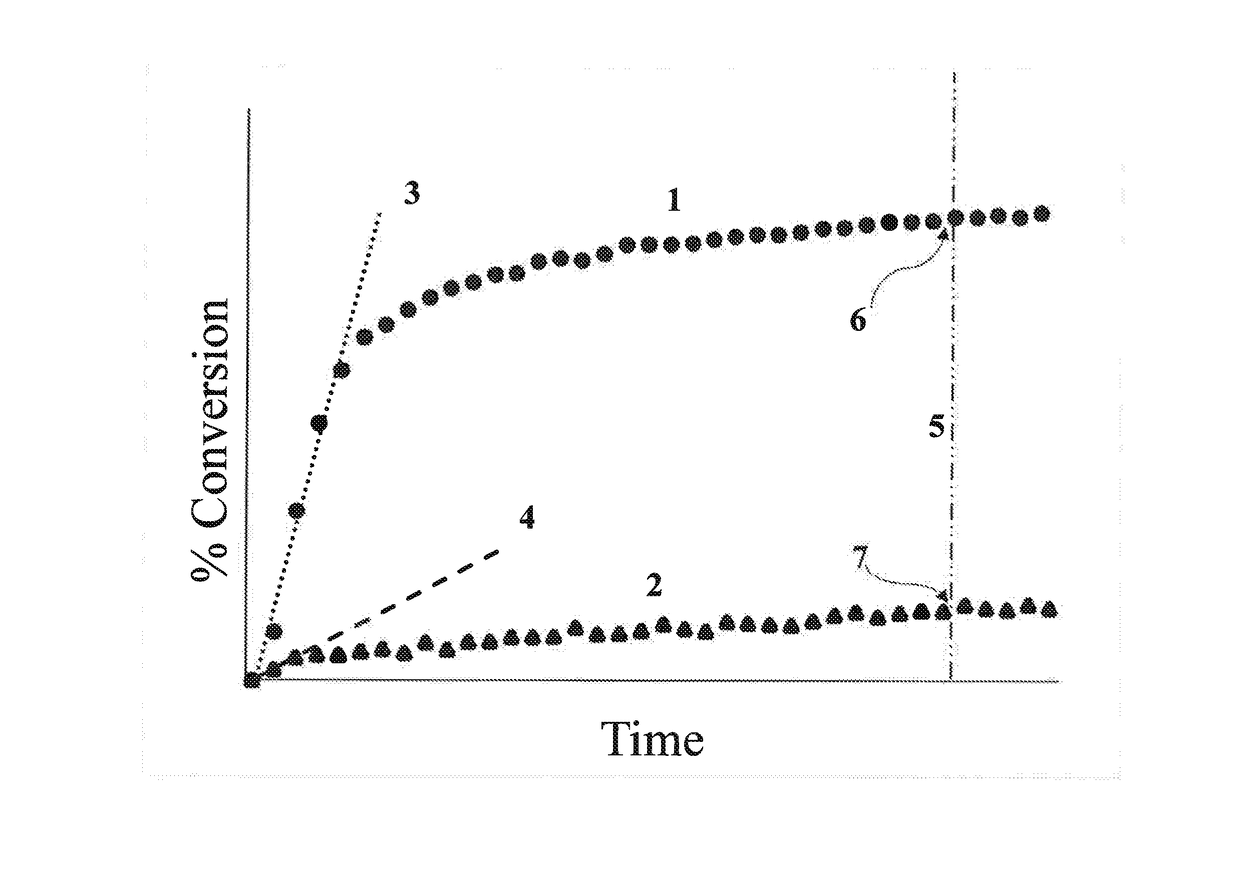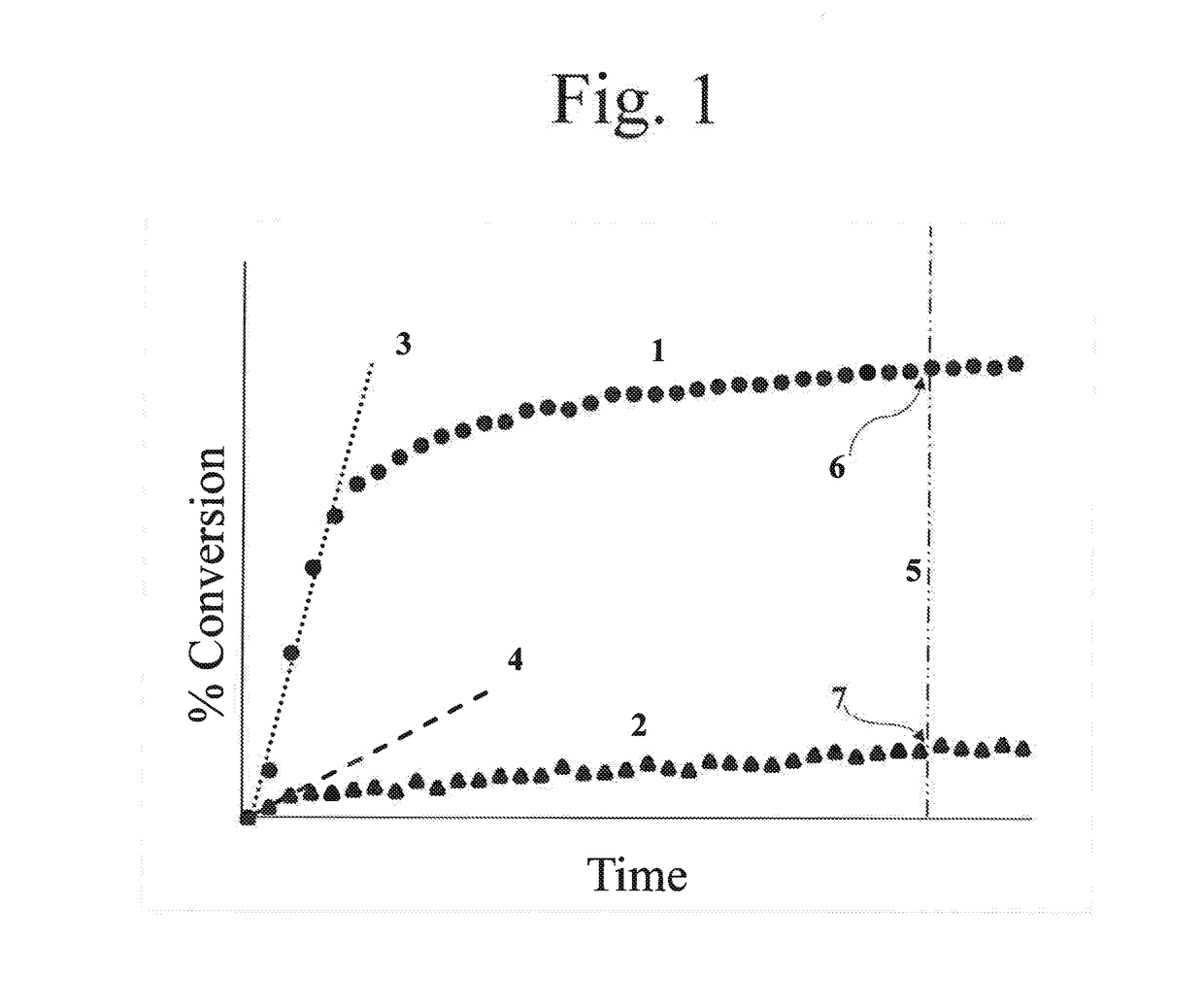Liquid, hybrid uv/vis radiation curable resin compositions for additive fabrication
a technology of additive fabrication and composition, which is applied in the direction of additive manufacturing processes, instruments, photomechanical equipment, etc., can solve the problems of their drawbacks, and the significant power output of such laser-based systems can sometimes generate excess hea
- Summary
- Abstract
- Description
- Claims
- Application Information
AI Technical Summary
Problems solved by technology
Method used
Image
Examples
examples
[0150]These examples illustrate embodiments of the liquid radiation curable resins for additive fabrication of the instant invention. Table 1 describes the various components of the liquid radiation curable resins for additive fabrication used in the present examples.
TABLE 1Function inSupplier / ComponentFormulaChemical DescriptorManufacturerOXT-101Cationically3-Ethyl-3-hydroxymethyl-oxetaneToagoseipolymerizablecomponentUVR 6105Cationically3′,4′-Epoxycyclohexane)methylDow Chemicalpolymerizable3,4-epoxycyclohexylcarboxylatecomponentpolyTHF1000AdditivePolytetramethylene glycol,Invistamolecular weight 1000 g / molEpon 828CationicallyBisphenol A Diglycidyl EtherHexionpolymerizablecomponentEbecrylFree-radicallyBisphenol A Diglycidyl DiacrylateAllnex3700polymerizablecomponentIrgacure 250PhotoinitiatingSolution of 50% Iodonium, (4-BASFpackagemethylphenyl)[4-(2-methylpropyl)phenyl]-, hexafluorophosphate and50% propylene carbonateBluesil PIPhotoinitiating[4-(1-methylethyl)phenyl](4-Bluestar2074p...
examples 1-60
[0156]First, a base resin for additive fabrication including a cationically polymerizable constituent (further including an oxetane, a cycloaliphatic epoxide, and a glycidyl ether epoxy), a free-radically polymerizable constituent, and a chain transfer agent additive (“Resin Base 1”) was prepared according to well-known methods in the art by combining the components listed in Table 5 below.
[0157]The cure performance under UV / vis conditions of Resin Base 1 when incorporated with various photoinitiating packages was then evaluated according to the polymerization rate test methodology described below.
[0158]A sample plot of the cure performance of two compositions is depicted in FIG. 1. FIG. 1 depicts the cure performance, as represented by the % conversion of a polymerizable component as a function of time. Such conversion could represent the amount of polymerization of the cycloaliphatic epoxide component, the oxetane component, or acrylate component, as non-limiting examples. The dat...
PUM
| Property | Measurement | Unit |
|---|---|---|
| ionization potential | aaaaa | aaaaa |
| ionization potential | aaaaa | aaaaa |
| wt. % | aaaaa | aaaaa |
Abstract
Description
Claims
Application Information
 Login to View More
Login to View More - R&D
- Intellectual Property
- Life Sciences
- Materials
- Tech Scout
- Unparalleled Data Quality
- Higher Quality Content
- 60% Fewer Hallucinations
Browse by: Latest US Patents, China's latest patents, Technical Efficacy Thesaurus, Application Domain, Technology Topic, Popular Technical Reports.
© 2025 PatSnap. All rights reserved.Legal|Privacy policy|Modern Slavery Act Transparency Statement|Sitemap|About US| Contact US: help@patsnap.com



